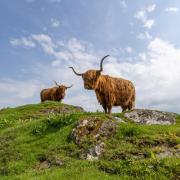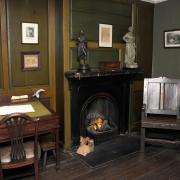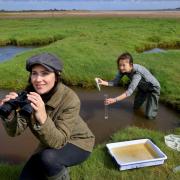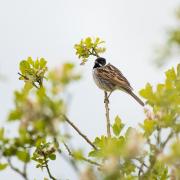All the birds we know as pigeons or doves belong to the same family – Columbidae - with five species regularly found in the UK. But which is which and why do they get mistaken for each other? Keith Kirk explains how you can tell your wood pigeon from your feral pigeon, stock doves from collared doves, and wonders if we’ll ever see true rock doves and turtle doves again
Was it a pigeon or was it a dove you saw? The names ‘dove and ‘pigeon’ can be deceptive. Scientifically speaking, neither of them carry much merit. All the birds we know as either pigeons or doves belong to the same family – Columbidae - with five species regularly found in the UK (or six if you count the turtle dove, which is a very rare bird these days). The name dove is usually given to the smaller members of this family.

The most familiar to most people are feral pigeons; the birds you always see flocking in towns and cities, scrabbling after scraps of food, their markings and colours varying dramatically. Feral pigeons are the result of human intervention. We bred them from a wild ancestor, the rock dove, and, given the numbers of feral pigeons around these days - which interbreed with the wild ones - I wonder if there are any true rock doves left?
They were most likely first domesticated as a source of food and later for other reasons, such as racing and carrying messages in wartime. Overtime, these domesticated descendants have escaped and thrived in urban areas across our towns and cities. As feral pigeons spread, they bred with rock doves, which they are now gradually replacing.

However, a true wild rock dove is virtually indistinguishable from the classic grey version of the feral pigeon, with their pale grey body, purple-green metallic flush on the neck, two neat black bars across their wings, and a white patch on the rump. If my memory serves me right from when I kept pigeons, they were referred to as Blue Bars. These similarities have made it tricky to monitor wild rock dove populations, with scientists now needing to gather DNA evidence to be certain that populations are genuine.
Wood pigeons are a common sight in pretty much any part of the UK, from farmland to urban parks and town gardens. If you have ever put out a birdfeeder, you’ve probably attracted a wood pigeon or two! These plump birds are our largest pigeon at around 40cm long and often weighing over 500 grams. Adults are grey with a vinous wash to the breast and a blue-grey head. One of their most distinctive features is an obvious white patch on each side of the neck. They have a yellow eye with a distinctive black teardrop pupil, and a red and yellow beak.

Unlike wood pigeons which make a flimsy twig nest, stock doves are tree hole nesters and often spend some time in the tops of tall trees, hence they are easily overlooked. Good-sized tree holes can be hard to find, which sometimes brings them into conflict with jackdaws, owls, and other birds which nest in holes, even large nest boxes.
The only reference most of you will hear to turtle doves will be in the Christmas song, The Twelve Days of Christmas. Sadly, I think I have only ever seen one in our region, back in the late 1970s. These are a migratory species, spending the summer here in open countryside and flying to West Africa for the winter. Nowadays you are more likely to see one when you are on holiday, in places such as Spain.




























